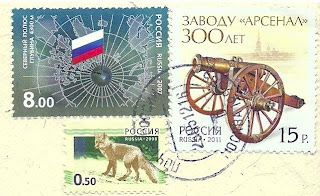Multiviews of Porvoo.
Sent by Juho, a postcrosser from Porvoo, Finland.
This is from Wikipedia : Porvoo (Finnish pronunciation: [ˈporʋoː]; Swedish: Borgå [ˈbɔrɡo]) is a city and a municipality situated on the southern coast of Finlandapproximately 50 kilometres (30 mi) east of Helsinki. Porvoo is one of the six medieval towns in Finland, first mentioned as a city in texts from 14th century. Porvoo is the seat of the Swedish speaking Diocese of Borgå of the Evangelical Lutheran Church of Finland.
Porvoo was first mentioned in documents in the early 14th century, and Porvoo was given city rights around 1380, even though according to some sources the city was founded in 1346. The old city of Porvoo was formally disestablished and the new city of Porvoo founded in 1997 when the city of Porvoo and the Rural municipality of Porvoo were consolidated. When Sweden lost the city of Viborg to Russia in 1721, the episcopal seat was moved to Porvoo. At this time, Porvoo was the second largest city in Finland. After the conquest of Finland by Russian armies in 1808 Sweden had to cede Finland to Russia in 1809 (the Treaty of Fredrikshamn). The Diet of Porvoo in 1809 was a landmark in the History of Finland. The Tsar Alexander I confirmed the newFinnish constitution (which was essentially the Swedish constitution from 1772), and made Finland an autonomous Grand Duchy.
The Porvoo Common Statement is a report issued at the conclusion of theological conversations by official representatives of four Anglican Churches and eight Nordic and Baltic Lutheran Churches in 1989–1992. It established the Porvoo Communion, so named after the Porvoo Cathedral where the Eucharist was celebrated on the final Sunday of the conversations leading to the Statement
The town received its name from a Swedish earth fortress near the river Porvoonjoki which flows through the town. The name Porvoois the Fennicised version of the Swedish name (Borgå) and its parts of borg meaning "castle" and å "river".

























